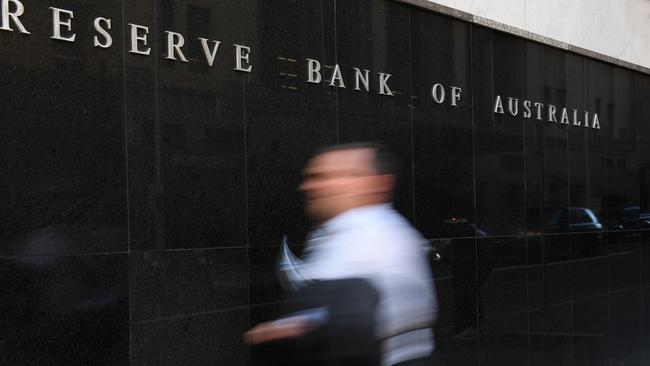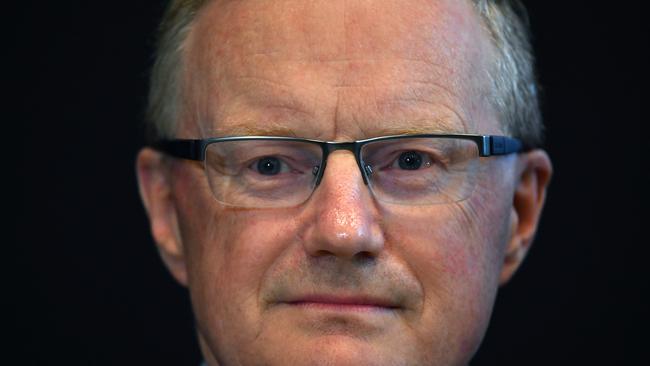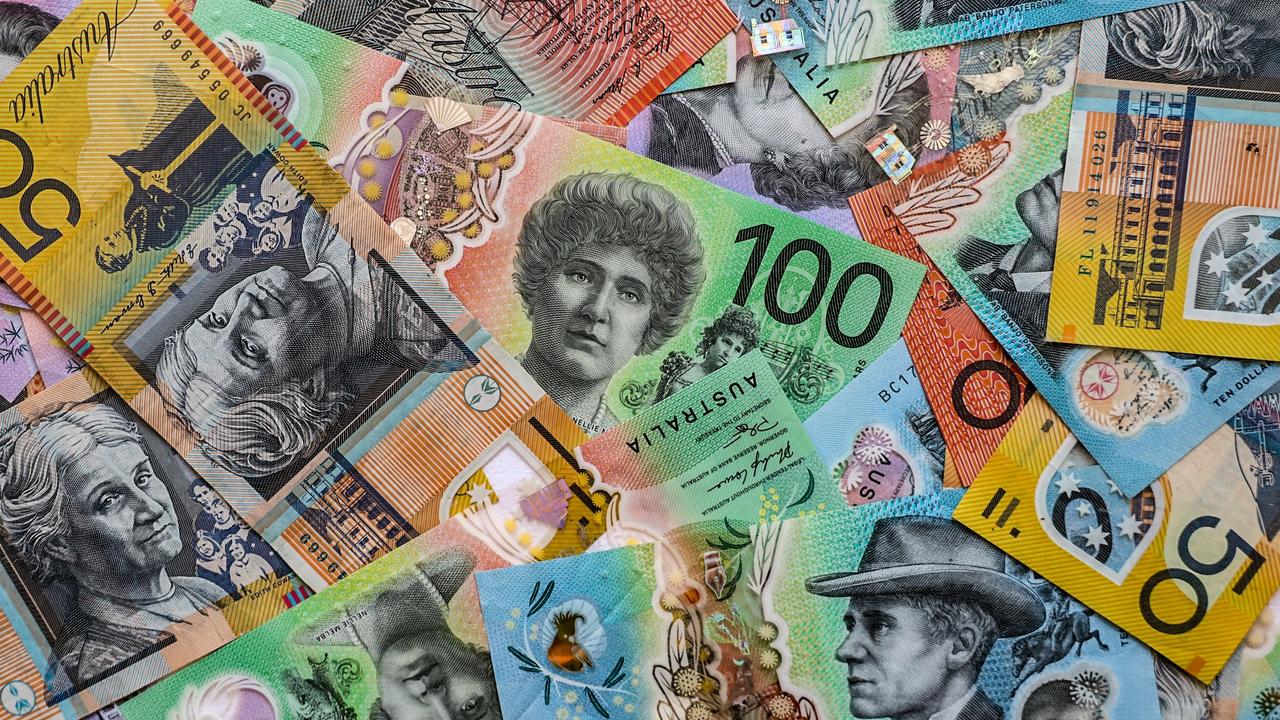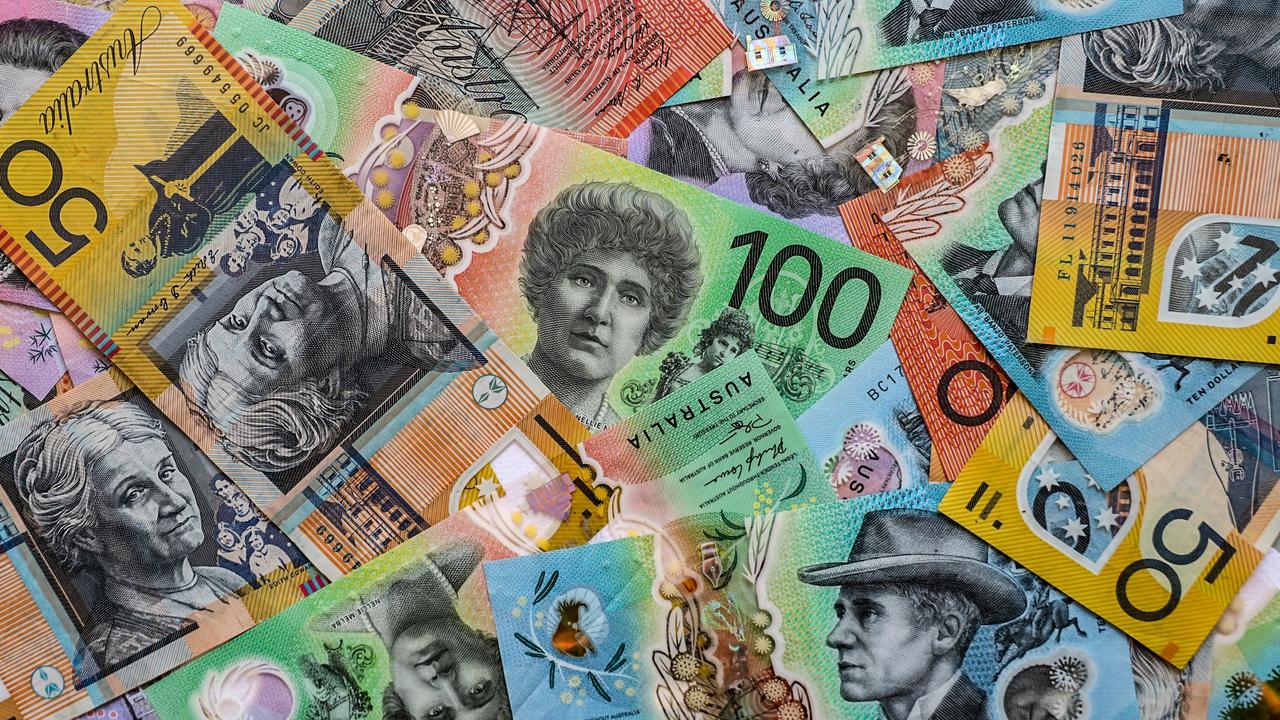Reserve Bank of Australia has left the official cash rate at 0.75 per cent
The Reserve Bank of Australia has held the official interest rate at 0.75 per cent – but punters expect it to be slashed again within months.

Interest Rates
Don't miss out on the headlines from Interest Rates. Followed categories will be added to My News.
Australia’s official cash rate will remain at a historic low of 0.75 per cent until at least February 2020.
At its December meeting this afternoon – the last for 2019 – the Reserve Bank of Australia adopted a wait-and-see approach by holding the interest rate following three previous rate cuts in June, July and October this year,
But most experts are now convinced we could see the interest rates cut further still to 0.5 per cent at the next meeting following the annual January break.
In his statement, RBA Governor Philip Lowe said the outlook for the global economy remains “reasonable” and that while the risks are “still tilted to the downside”, some had lessened recently.
“The US – China trade and technology disputes continue to affect international trade flows and investment as businesses scale back spending plans because of the uncertainty,” he said.
“At the same time, in most advanced economies unemployment rates are low and wages growth has picked up, although inflation remains low.
“In China, the authorities have taken steps to support the economy while continuing to address risks in the financial system.
“Interest rates are very low around the world and a number of central banks have eased monetary policy over recent months in response to the downside risks and subdued inflation. Expectations of further monetary easing have generally been scaled back.”
He said after a “soft patch” in the second half of 2018, the Australian economy “appears to have reached a gentle turning point”.
“The central scenario is for growth to pick up gradually to around 3 per cent in 2021,” he said.
“The low level of interest rates, recent tax cuts, ongoing spending on infrastructure, the upswing in housing prices and a brighter outlook for the resources sector should all support growth.”
Your Investment Property and Your Mortgage editor Sarah Megginson said so far, the economic response to shaving three-quarters of a per cent off interest rates in just five months has been “subdued at best”.
“Following a reasonably volatile 12 months in terms of property price movements and consumer access to mortgage funding, some sectors of the housing market appear to be responding to an environment of lower interest rates, particularly in Sydney and Melbourne,” she said.

“In fact, new data from the November CoreLogic Home Value Index data released Monday, December 2 highlights the continued, somewhat surprising rebound in residential property price growth in Sydney and Melbourne, with the price index up around 8 per cent in both cities since June 2019.
“It’s important to note that sales volumes are still down, and this median price ‘growth’ may be driven in part by more higher-value transactions, as APRA’s lifting of the serviceability cap has increased borrowers’ access to finance this year.”
She said most economists and analysts expect this growth to slow over the new year, and that many also believe that despite RBA governor Philip Lowe insisting that the federal bank had “no appetite” for quantitative easing (QE), it could be on the cards next year.
“Looking ahead, if rebounding property prices fail to translate into increased consumer confidence and therefore, rising consumer spending and a growing appetite for investing, then we may see another interest rate cut in February or March 2020,” she said.
“The case for an interest-rate cut in February will depend on housing, construction and economic data released over the next two months.
“If consumers are buoyed by recent interest rate cuts and this translates to big Christmas spending, it may form part of a fiscal stimulus that gets the economy moving. However, if consumer spending fails to alleviate the Reserve Bank’s pressure to drive the inflation rate up, this could give them cause to reduce the cash rate further next year.”
IG Australia market analyst Kyle Rodda said a recent deterioration in economic fundamentals had seen the unemployment rate rise to 5.3 per cent, wages growth drop to 2.2 per cent and retail sales flatline at 2.5 per cent.
“On top of this, Wednesday’s GDP data is forecast to show a well below trend growth rate of 1.6 per cent. As it currently stands, the Australian economy is in a sluggish state; the market will be sensitive to any revisions the RBA makes to its outlook for the economy,” he said.
“The market is clearly showing little faith in the RBA’s ability to forecast, implying in the interest rate futures curve that the RBA will indeed need to cut rates again in the near future … the market has baked in a 60 per cent implied probability that the cash rate will be lowered in February.

“In addition to this, the balance of opinion in the market appears to suggest another cut will be at hand after this, too. Thirty-two basis points of rate cuts are baked into the market currently for 2020.”
And while realestate.com.au chief economist Nerida Conisbee said three interest rate cuts “haven’t exactly put a rocket up the economy”, she expected the RBA to “just watch and wait” – for now.
Ms Conisbee shares the view of most property and economic commentators who believe another cut is likely in the first half of 2020.
“The federal budget in May will be really interesting. It’s highly likely we’ll see tax cuts brought forward and more aggressive infrastructure projects planned,” she said.
“There will be other measures looked at to try and boost economic growth, not just relying on monetary policy to try and push forward the economy.”
And further rate cuts in the new year could help the property market fight off economic headwinds, CoreLogic’s head of research Tim Lawless said.
“Mortgage rates are already at their lowest level since at least the 1950s, which is one of the main factors supporting increasing market activity. If rates do move lower, no doubt policy makers will be watchful for any triggers that could provoke a policy response limiting housing credit,” he said.
“Previous rounds of macro-prudential have had an immediate slowing effect on market activity.”
Originally published as Reserve Bank of Australia has left the official cash rate at 0.75 per cent



